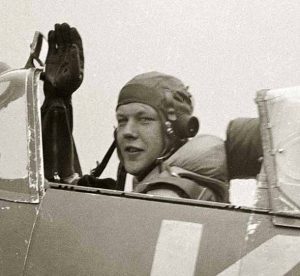
Crowded kiosks inside Terminals 1 and 3 at Pearson. Automated luggage processors. Swamped ticket counters. Endless security lines. Chaotic airline gate waiting areas. Scrambling for carry-on space in overhead bins. And lacklustre service in the air.
None of these places has been a welcoming spot for Canadians flying domestically recently. Indeed, when my wife and I went through all those figurative minefields last weekend, I think the overwhelming question we asked ourselves was:
“Why would anyone actually want to attempt air travel right now?”
Multiply that feeling times the nearly 200,000 people who make their way through Pearson International Airport each day, and you get some sense of popular sentiment about air travel in the 2020s.
In a recent interview with Jayme Poisson on a CBC podcast, Ganesh Sitaraman, author of Why Flying is Miserable and How to Fix It, blamed deregulation. Conservative North American governments, back in the 1970s and ’80s, chose to repeal regulations which tended to favour passengers.
“In the 1970s, you had airlines that were primarily competing based on the quality of service. So, they had piano bars in airplanes,” he said.
Sitaraman went on to explain that back then, air travel was treated more like a public utility, or a nation’s transportation infrastructure. What national governments wanted for Canadians was to ensure that all parts of the country had access, and that it was a reliable, stable system with the best possible aircrews at the helm. All that flew out the window, as it were, with deregulation of air travel 40 years ago.
Equally important, since the retreat of the pandemic when passengers began feeling it was safe to fly again, those professionals who work in commercial aviation have flexed their collective muscles for higher wages. Thus, the Air Canada pilots’ threatened job action earlier this month. And when I looked at their demands and realized their value to the Canadian economy, I felt comfortable supporting their position.

We all want the most qualified and fairly paid professionals in the cockpits of Canada’s passenger airliners. Indeed, as I considered piloting skill, I remembered a unique wartime incident 84 years ago, when Canadian fighter pilots flew daily sorties against the Luftwaffe (the German air force) in the Battle of Britain.
It was a September day in 1940, at RAF base Northolt, just north of London. The station commander, Group Captain Stanley Vincent, had called a meeting of the three squadron leaders (each in command of 12 pilots and their fighter aircraft at the base) to discuss protocols for an emergency “scramble” (take-off) involving all three squadrons (36 aircraft) at one time.

In an interview, one of the Canadian fighter pilots, Bev Christmas, explained that Vincent wanted the squadron leaders to lead the scramble in rotation. Suddenly, as the commanders discussed who was to lead first, enemy aircraft were sighted, and the base was issued a full three-squadron scramble.
“The airfield had a slight mound in the middle,” Christmas recalled, “so you couldn’t really see from one end of the airfield to the other. But we all jumped into our fighters waiting for someone to start us off.”
By this time, all three squadron commanders were racing to their respective corners of Northolt airfield and the inevitable result was that 36 pilots opened their throttles simultaneously with all 36 aircraft pointed to the centre of the field.
Just as the undercarriages of the 12 Canadian fighter aircraft lifted off the ground, the pilots spotted the noses of a dozen of their sister squadron aircraft coming straight at them. Bev Christmas recalled that horrible moment with so many fighter aircraft meeting over the middle of the airfield.
“There were airplanes everywhere,” he said. “Some over top. Others underneath me.” And he added facetiously, “I remember flying in the front door of the officers’ mess and out the back. … By the time all the Hurricane fighters got airborne, we were all over hell’s half acre. But the miracle was that nobody had collided with anybody else.”
Pilot Officer Christmas noted that the only casualty was G/C Stanley Vincent, who had to be helped into his staff car, driven to the mess and offered a stiff drink. Christmas said finally that the entire incident became known at the base as “The Northolt Football Game.”
It might reassure anyone who flew commercial airlines after the war that veterans such as Bev Christmas migrated to civilian aviation to fly passenger planes. So, their passengers were not only in the capable hands of Battle of Britain veterans, but also possibly players in the Northolt Football Game.